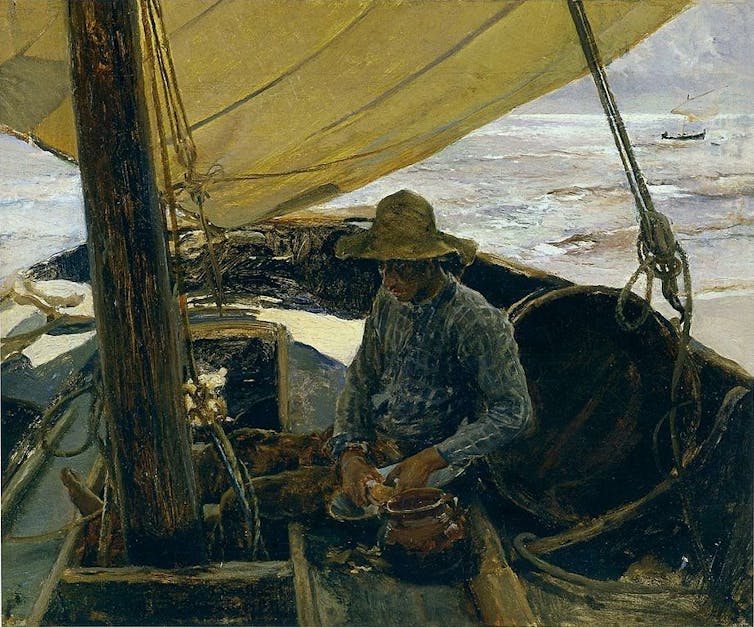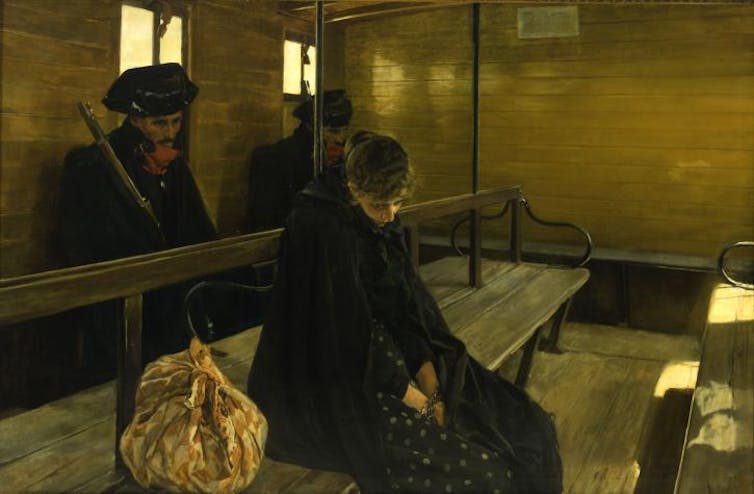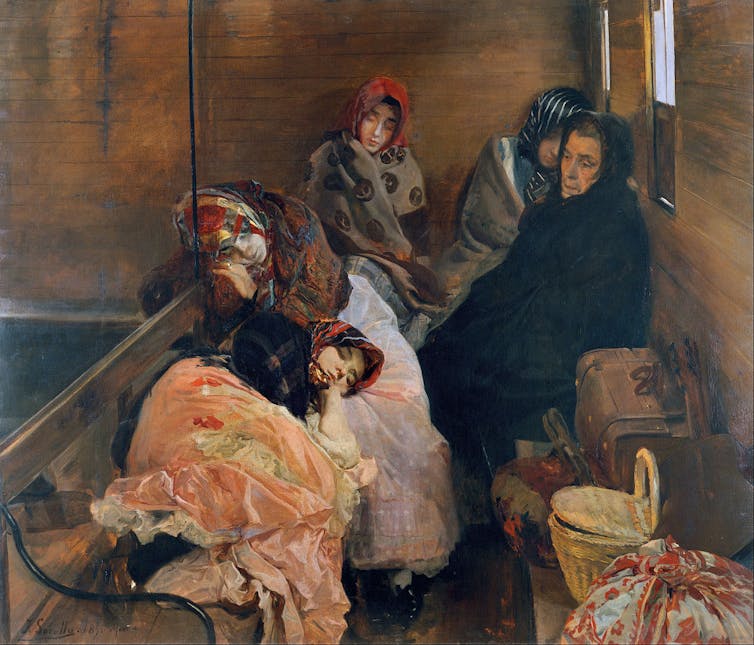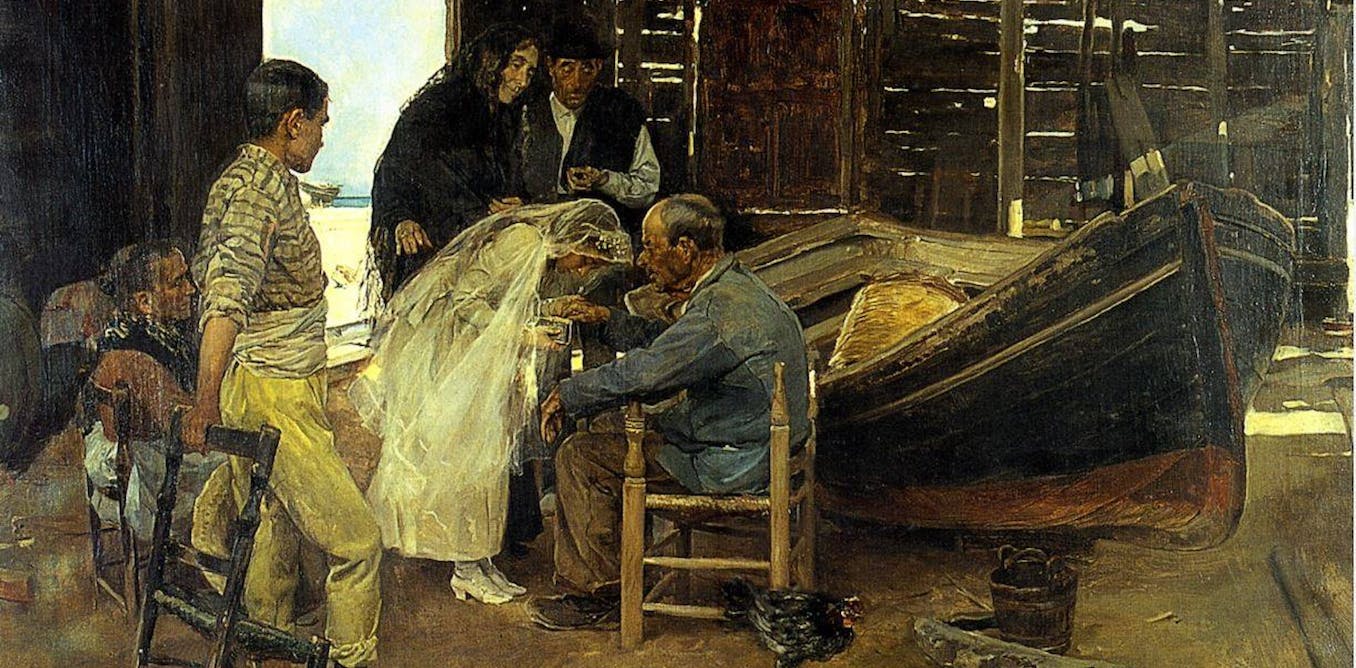Joaquín Sorolla (1863-1923) is one of the great masters of painting. He has gone down in history for the way he captured the light in his paintings and depicting the differences between Mediterranean and Cantabrian luminosity in moments of everyday life.
There has been much debate as to whether or not he belonged to the impressionist tendency, from which he always wanted to distance himself in order to create his own personal pictorial language. His chromatic richness and luminosity have often blurred his beginnings, when he was trying to make his way at the San Carlos School of Fine Arts in his native Valencia, where he entered in 1878.
And we forget that in his first steps he was a great renovator in his approach to social realism, the prevailing trend at the end of the 19th century.
Eighteenth-century academia was interested, in art, in themes created around heroes. A century later, these gave way to anonymous men and women living simple lives, depicted with great nobility and drama.
Sorolla was not left out of this trend. It was also relevant that these themes gradually became more widely accepted in official competitions, which the painter entered in search of an endorsement at the beginning of his career.
The culmination of these events came in 1895, when Sorolla won the first medal at the Spanish National Exhibition with And They Still Say Fish is Expensive!. Sorolla was convinced that “prizes do not make good painters”. But the fact is that he wrote a letter to his wife Clotilde on 15 June 1895 to inform her that he had won the coveted prize with this work.
The Hardness of the Sea
Museo del Prado
Using a palette of earthy colours, the painter places before our eyes the hard life of the fishermen. The idyllic sea to which we are accustomed in his paintings gives way to social realism.
He was probably inspired by the literature of his friend Vicente Blasco Ibañez, who in his novel Flor de Mayo (1895) had recounted the accident of a group of sailors at sea and the death of the youngest, Pascualet, on the Valencian beach of Cabañal.
Sorolla’s brushstrokes also capture with profound humanity the helplessness of two experienced sailors before the figure of the injured young man. This is a theme that explains the expressive intensity of the faces, weathered by the sun, and the gestures of the hands worn by work. Sorolla, with a unique pictorial language, conveys the drama of the moment, exalting the simplicity of the anonymous fishermen. The vibration of his brushstrokes generates a veracity capable of competing with late 19th-century photography.
Before tackling the considerable dimensions of this painting (151.5 x 204 cm), Sorolla carried out two preparatory studies to study its scenography: Bodega de una embarcación. Valencia and Interior of a boat.
These works, painted on canvas and cardboard, recreate the interior of boats with their motifs almost in the manner of still-lifes, with a notable differentiation of textures: the roughness of the rope, the wood of the barrel and the shine of the fish scales, strongly illuminated by the light that enters through the boat’s hatch.
Seafaring psychology

Wikimedia Commons
The unity, technical mastery and psychological capture of his characters can be seen in other lesser-known paintings from Sorolla’s early period. In Peeling Potatoes (1891) a solitary fisherman prepares his daily sustenance. And in The Blessing of the Boat on Cabañal Beach (1895), the gaze of a young fisherman invites us to take part in the solemn ceremony.
The sober chromatic palette that colours the clothes in the foreground contrasts with the luminosity of the Mediterranean, where a barely sketched sailboat contrasts the harshness of the fishermen’s work with the joyful image of the sea in leisure time, a perception that would dominate in Sorolla’s later images.
Religious overtones also play a leading role in social realism in The Happy Day (1892). Here, with a gesture of great tenderness, a girl who has received her first communion goes to a fishermen’s hut to receive her blind and sick grandfather’s blessing.
In this case, too, Sorolla prepared his composition with preliminary drawings and sketches to submit it to the National Exhibition of 1892, declaring it to be one of his favourite works. It includes a view of the Mediterranean through the open door of the room. The artist uses the light shed inside the hut to make a study of chiaroscuro in the definition of the space.
Inequalities on land

Mildred Lane Kemper Art Museum
The denunciation of social inequalities in this early period of Sorolla’s work goes beyond the maritime sphere. The harsh reality is also present in Another Marguerite! (1892), in which a woman travels from Valencia to Madrid handcuffed and guarded by the Benemérita for having killed her son.
Sorolla was inspired by an image he himself saw on a train journey to evoke the Marguerite of one of the best dramas of the 19th century: Goethe’s Fausto. In it, Marguerite, mad with love for the protagonist, is imprisoned for killing the illegitimate child she has with him.
A poor carriage is repeated as the spatial setting for White Slave Trade (1894), with four young prostitutes accompanied by their procuress, with a look of deep concern on her face.

Museo Sorolla
In these works Sorolla shows himself as a painter of the human being in his essence, and this provokes the special emotion of the spectator, which led to the recognition he enjoyed during his lifetime, becoming a point of reference in the Spanish culture of his time.
This admiration endures to this day, as the exhibitions held on the occasion of his centenary. Sorolla, in his tireless and versatile productivity, is the painter of light and colour, of the innocence of children, the beach, the family, pain, illness…. And he is also the painter of social realism, capturing with his brushes the precariousness of life to the point of “glorifying the pain of living of the most humble”.



